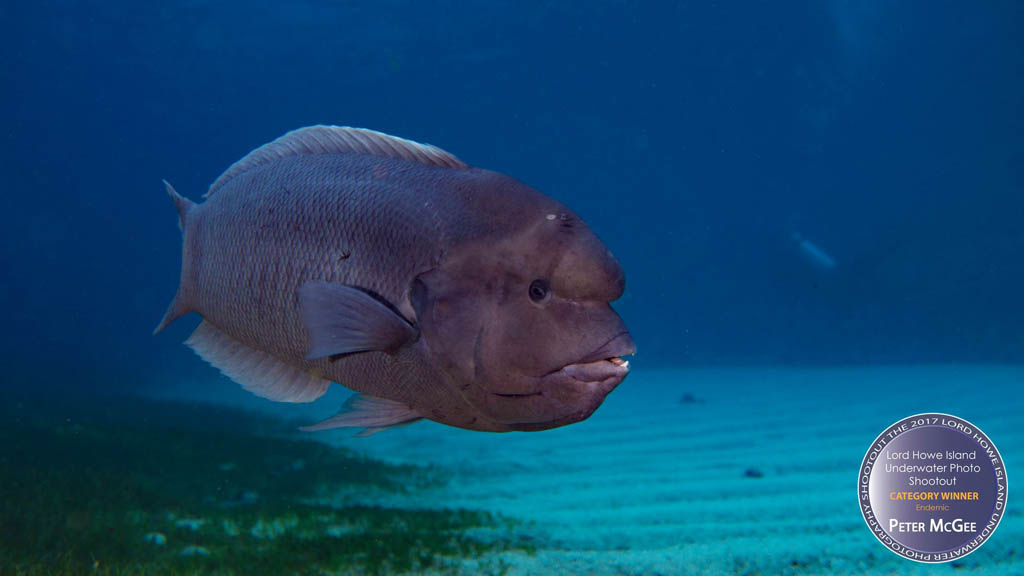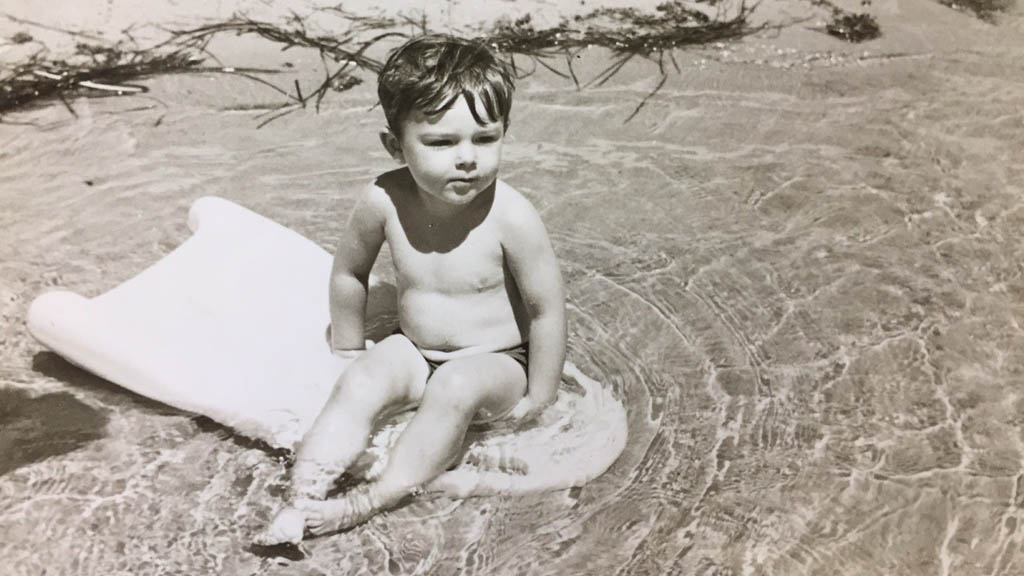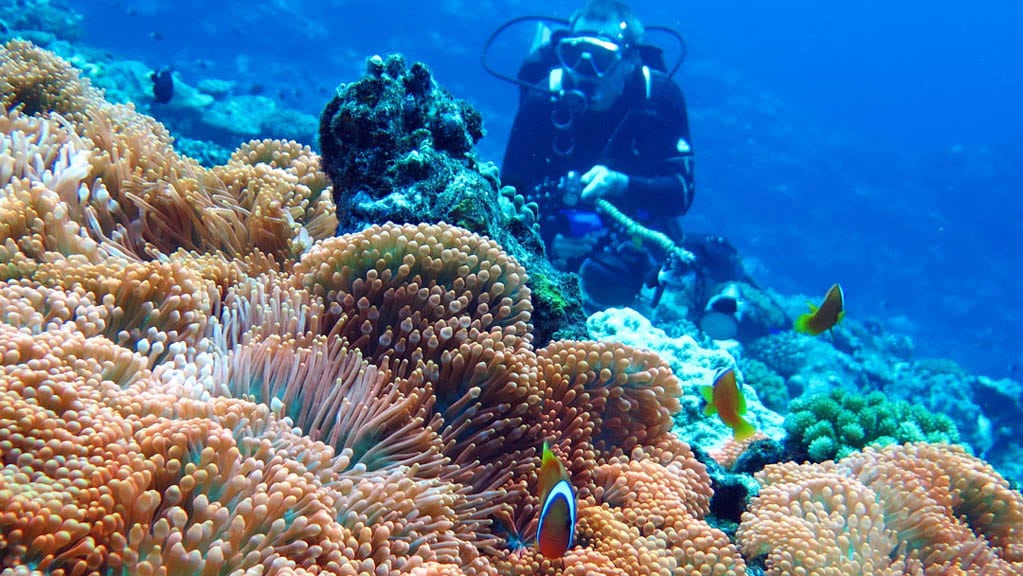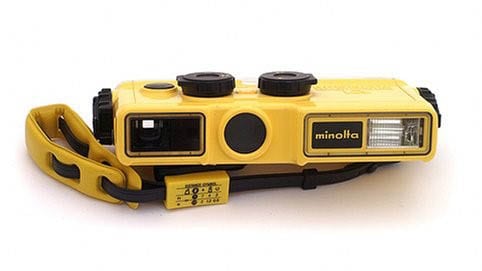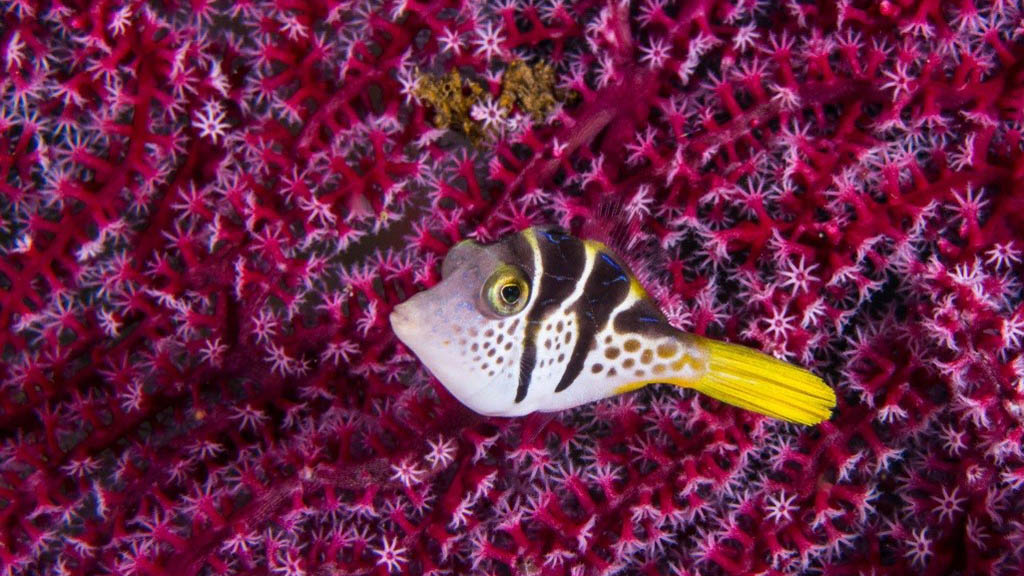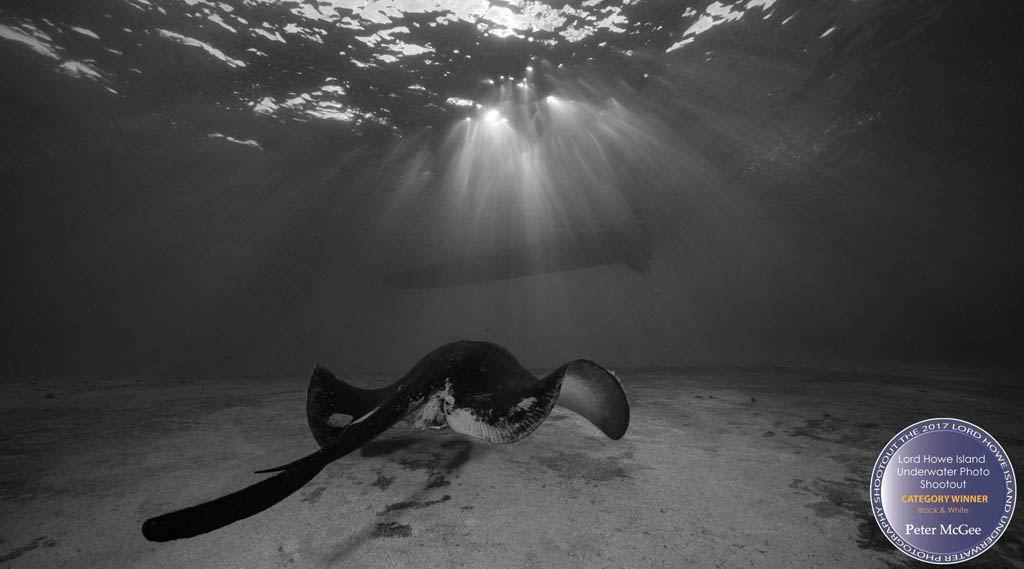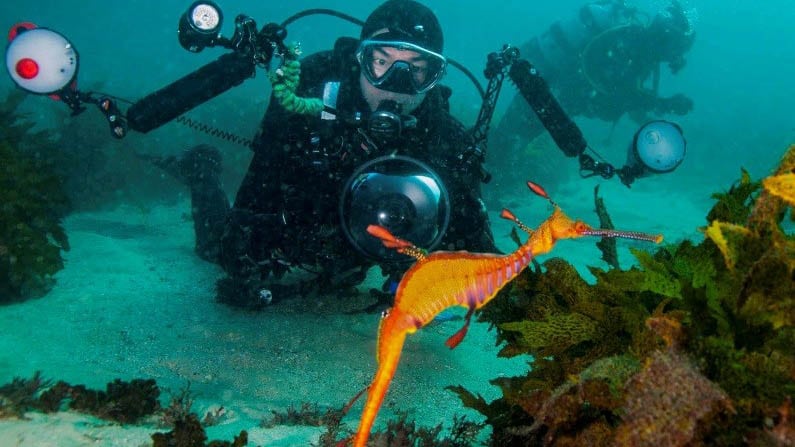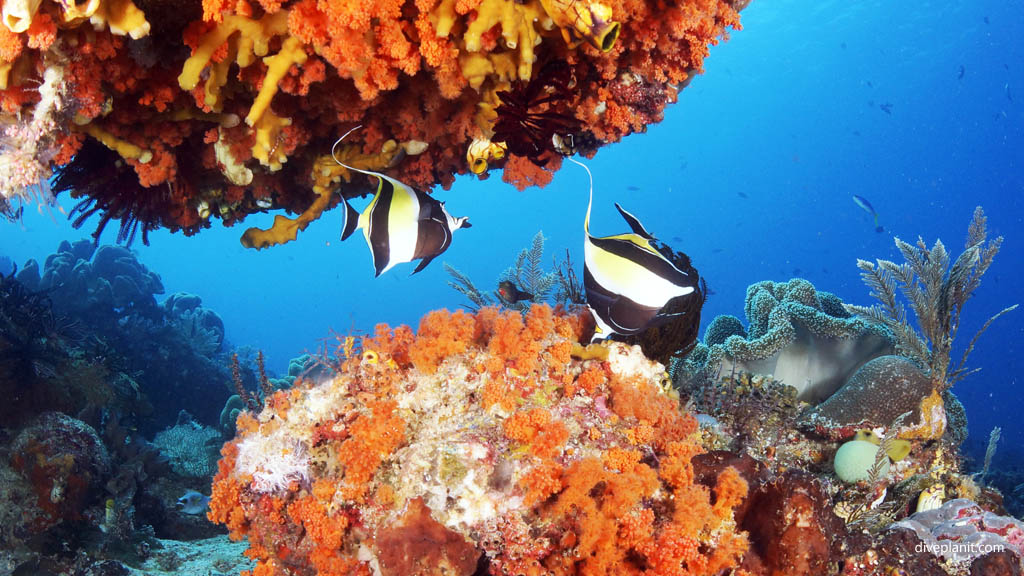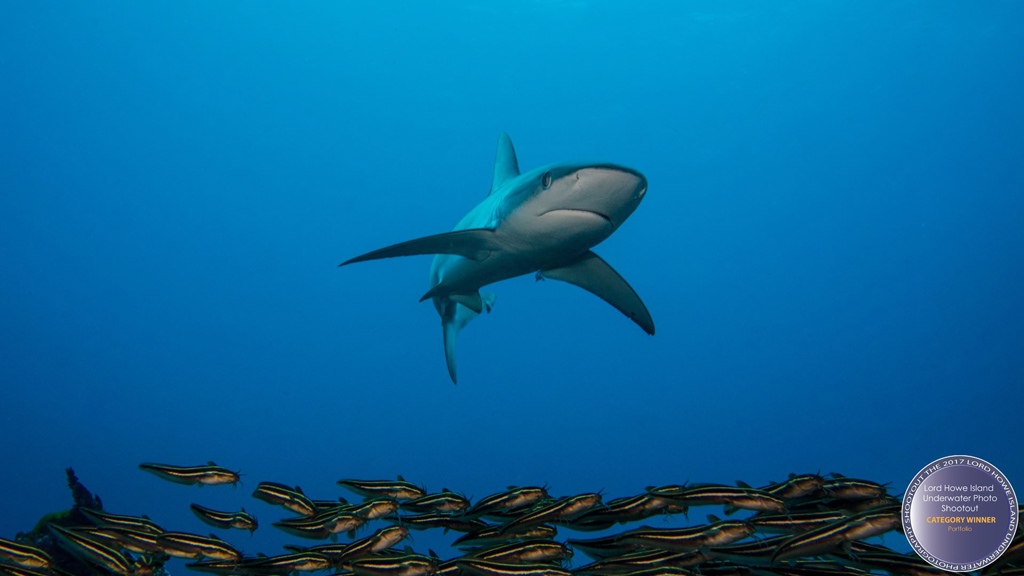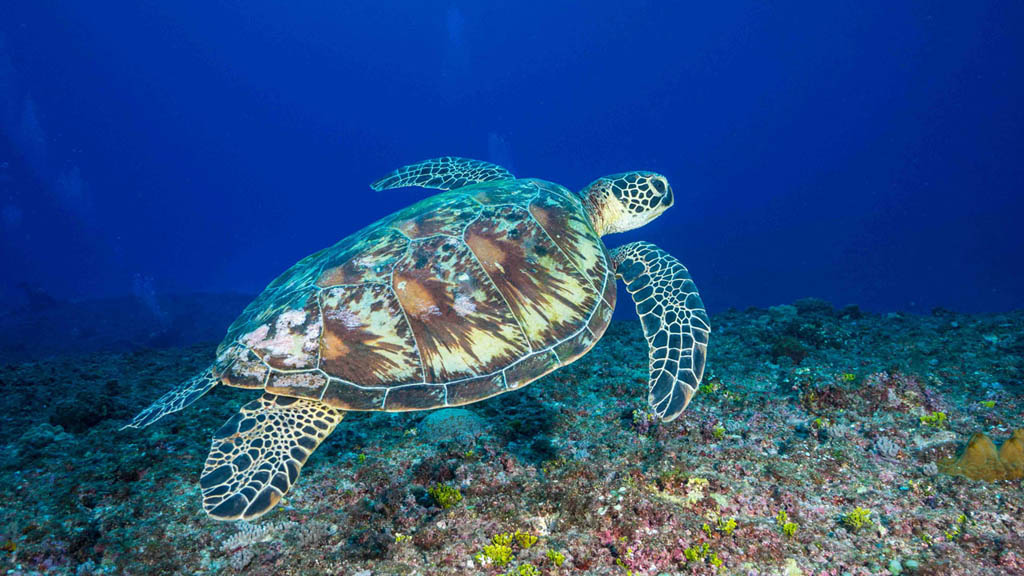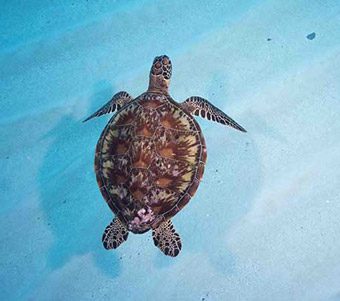Diveplanit profiles our own Associate Photographer – Pete McGee – Winner of the Endemic and Black & White Categories, and overall portfolio winner in the First Lord Howe Island Underwater Photo Shootout. Pete has supplied Diveplanit with photos for a number of our destinations including: the Coral Sea aboard Mike Ball’s liveaboard Spoilsport, Raja Ampat, and most recently Okinawa.
For you personally, what came first – the camera or the view?
Definitely the view. I’ve always been interested in nature. I spent my childhood catching bugs in the garden or fish and crabs in the tidal pools. My parents’ backyard had a pond and (to their horror) I expanded this with two large tortoise enclosures.
My Dad had a career as a medical photographer, taking photos of surgical operations, tumours and diseases. Glamorous it wasn’t, and I think that put me off for a while as my interest in photography came well into my adult years.
What inspired your passion for diving?
I grew up going on annual beach holidays. I did a bit of snorkelling in my teenage years, and fishing, so diving was a natural progression. On TV, cartoons like Aquaman and Marineboy probably also exposed me to this other world.
I remember when I was about six, Mum was very apologetic because we didn’t have the money for a party with friends for my birthday, but could afford my admission to Manly Marineland. I didn’t care about no party – I was going to Marineland!
What first inspired you to become an underwater photographer?
I did a bit of photography on safari in Africa and this really ignited my passion. I started diving regularly again about 10 years ago. Other divers had cameras and I started to see underwater images and wanted to create my own.
What was your first camera and what’s your camera of choice now?
My first camera was a Minolta Weathermatic compact film camera in the 80s. I used it for happy snaps above water mainly but do remember taking in the pool and getting a few (poor) shots of friends surfing. It certainly wasn’t serious but I guess it started something.
At the moment I’m shooting with a mirrorless Sony NEX7 camera. I’ve had it a few years and I’ve grown into it. It’s a great camera and in the Nauticam housing is great for travelling and does just about everything a DSLR can. I’ll be looking to upgrade in a year or so, but I’m still exploring what I can do with this camera and various lenses.
This photo was a finalist in the 2017 Ocean Art Photo Competition – mirrorless compact class.
Do you/did you have any mentors when starting out?
No specific individuals, but I’d eagerly await any wildlife documentary coming to TV, and pour over wildlife photos and magazines. When I started diving I got involved in a volunteer environmental group called Ecodivers. The founder Dave Thomas was taking photos and guided me towards my first real underwater camera set up (an Olympus compact). Dave and the other members of Ecodivers also got me involved in various environmental activities, which was just as important as having fun and taking photos.
In terms of books I’d totally recommend the underwater guides of Martin Edge and Alex Mustard. I’ve learnt from them.
What is it that is special to you, about the underwater world?
The diversity and richness of life. There are so many different animals all living in complex ecosystems. In the leafy suburbs of Sydney where I live there are maybe 10 bird species I see each day. If I stick my head underwater nearby I’d see over 50 fish species in an hour. There’s also that real sense of adventure and promise that anything could appear because the oceans are wild.
Photo credit – Matt Parsons
What is your most memorable ocean experience?
So many come to mind….. Swimming with humpbacks in Tonga. Being circled by an ocean going manta ray while on a seal dive at Montague Island. The sharks of Osprey Reef Queensland and the colourful reefs teaming with fish in Raja Ampat.
Do you think many people have an understanding of what lies beneath the waves?
Despite the planet being 70% ocean, most people limit themselves (physically and mentally) just to the 30%. Regrettably many people’s experience of the ocean is what they read or eat! I’d like to help change that.
What message do you most want to convey to people with your photography?
I’d like people to realise the oceans are full of amazing and wonderful life. I want people to see how many beautiful and unique creatures there are, both big and small. If we appreciate things we are more likely to protect them, and our planet drastically needs our protection.
You can see more of Pete’s underwater photography via Facebook and Instagram.

